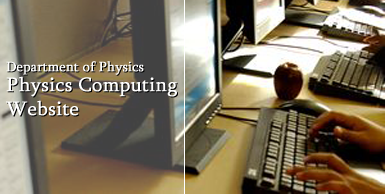
The Physics Department maintains an extensive research computing faciltity in support of it's many branches of Physics research. In addition, the department also maintains a academic computing facilty in support of the Physics Sunray student lab.
Research Computing
A major linux cluster acquisition was made in 2007 consisting of 56 Dell 1950 dual socket dual core servers - 48 purchased by Dr. Dave Rogers of the Carleton Laboratory for Radiotherapy Physics (CLRP) and 8 purchased by Dr. Manuella Vincter, member of the ATLAS research group, both funded through CFI grants. Drs Vincter and Rogers were appointed as CRC chairs to the Department of Physics in 2004. This cluster has been nick-named the "Nest". A second cluster was purchased by Dr. VIncter in 2008 and brought online later that year after the new A/C system was installed. The ATLAS cluster consists of 43 dual socket quad-core DELL servers. This installation coincided with the ramping up of the ATLAS data analysis efforts with the ATLAS detector now producing data..
The Physics department also maintains a four node mini-cluster for the Ottawa Hospital Regional Cancer Centre as part of arrangement between the OHRCC and the Physics Department (CLRP) made in 2008.
Sun Grid Engine software is used to provide a queuing system for the clusters with a combined total of over 650 core available for research computing as of May 2011.
The facility also features a number of disk storage elements providing researchers with over 100TB of data storage.
Information on how to obtain access to the Research computing facility and instructions on its use are available on the Physics Computing website using the links on the left. Please note that for security reasons access to some of this information is restricted to the Carleton University network only. Please contact the System Administrator for more information.
Academic Computing
A thirty-three seat Sunray lab for undergraduates is the focal point of the Physics academic computing facility. It is supported by a linux server and currently is used for course intruction for Physics, Chemistry, and Earth Sciences.